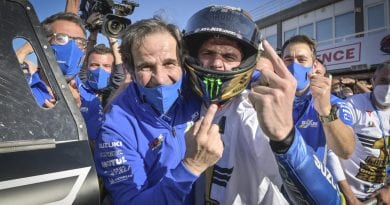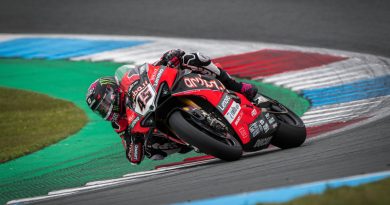The Spartan and The Beast: What went wrong for Jorge Lorenzo at Repsol Honda?
Jorge Lorenzo and Repsol Honda were supposed to be a fairytale with Jorge Lorenzo lining up with Marc Marquez, instead, it was a disaster.
On November 14th 2019, MotoGP legend Jorge Lorenzo announced his retirement from racing on the eve of the Valencia Grand Prix, exiting a two-year contract with Repsol Honda at the halfway stage. However, just a few months later in January 2020, Lorenzo announced his return to Yamaha in a test rider capacity, similar to that of Dani Pedrosa at KTM. So what led to one of the greatest riders of the modern era call it quits halfway through his contract with the Japanese giants?
On June 6th 2018, Honda Racing Corporation (HRC) announced the signing of three-time MotoGP world champion Jorge Lorenzo as the replacement for his compatriot and long-term rival Dani Pedrosa. Yet, despite high hopes and expectations, Lorenzo endured a dismal spell onboard the RC213V. He failed to score a single finish inside the top 10, and in his final race at Valencia, he finished 51 seconds behind fellow HRC rider, world champion Marc Marquez. So what went wrong for the man who can call himself the only rider to date to actively take a world championship from the marauding Marquez?
Firstly, the RC213V is beast unlike any other in the MotoGP paddock. It has widely been held to be the most aggressive and unpredictable bike of them all. Lorenzo by far had his greatest successes on the smooth and composed Yamaha M1, and even enjoyed decent results on the slightly more aggressive Ducati Desmosedici. By comparison, the RC213V is like a wild horse that, to date, only Marc Marquez has been able to (mostly) tame. Lorenzo justifiably felt that he could be the man to tame the beast, but unfortunately, that was simply not to be.
Secondly, injuries have probably been the single biggest hampering factor for Lorenzo even going back to his Yamaha days. Lorenzo has always been a strong, aggressive rider, and for the most part, this has been to his benefit. However, in recent years, it started to act to his severe detriment. In June 2019, he suffered a massive back injury in Assen, fracturing his T6 and T8 Vertebrae, alongside previous injuries to his feet and his wrists. These injuries naturally severely inhibited his ability to tame the most physical bike on the grid, and thus fed his lack of motivation to ultimately keep going on the Honda bike.
The third key thing to consider is the set-up of Repsol Honda itself. Ever since Marquez took the premier class by storm in 2013, Respol Honda have devoted all of their resources to and built their entire team around Marquez, often to the neglect of the rider on the other side of the pit box. Whilst this is understandable to a degree, it certainly did not help Lorenzo in the midst of his struggling. Because Marquez has proven to be the only rider capable of taming the beast that is the RC213V, HRC have practically built the bike specifically so that Marc can push it to the very edge. This meant that Lorenzo often found himself riding a bike completely alien to his own style of smooth, effortless riding; instead, being forced to try and physically wrestle the aggressive Honda around the track. This, coupled with his terrible injuries, made for a practically impossible task from the outset.
It was certainly a very sad sight to see a legend like the leader of Lorenzo-Land bow out in the sad manner that he did. Ultimately, he tried his best to ride the most physical bike on the grid, despite his limited physical condition, and the resulting failure to do so sapped his motivation to keep putting himself through the constant, tumultuous task of conquering the Honda beast.
Following his retirement, Jorge Lorenzo was supposed to wildcard at the Catalan GP on the Yamaha M1 in a ‘comeback’ manner, however following the season’s disruption thanks to COVID-19, we will not have a chance to see this until at least 2021.
Featured image – www.motogp.com
Written by Keelin McNamara




